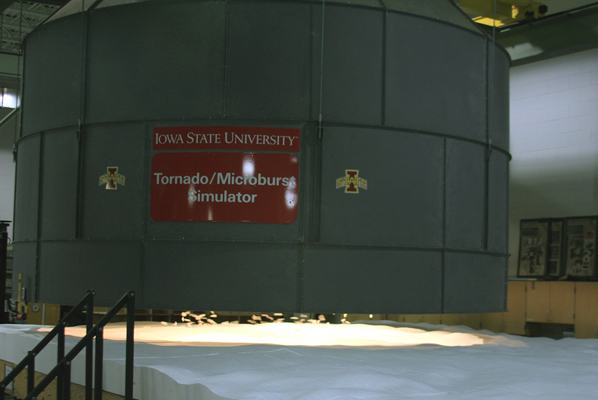Christopher Karstens was on the ground studying the damage caused by the deadly April 27, 2011, tornado that hit Tuscaloosa and Birmingham, Ala.
It was just a week after the tornado. He was between the two cities, in the rough country of the southern Appalachians about 20 miles northeast of Tuscaloosa. He said it’s terrain that’s “beyond hilly.” It’s covered by dense forest and clogged by high brush that’s tough to walk through. A hike of about 100 yards sometimes took as long as 45 minutes.
It was a perfect place for Karstens – a doctoral student from Atlantic who’s studying under the direction of Bill Gallus, a professor of geological and atmospheric sciences – to study the effects of complex terrain on the structure of a tornado.
The study is part of a larger Iowa State research program led by Partha Sarkar, a professor of aerospace engineering and director of the university’s Wind Simulation and Testing Laboratory. The lab includes several conventional wind tunnels and a Tornado/Microburst Simulator that has been fully functional since 2005. The Tornado/Microburst Simulator has helped researchers attract about $2.3 million from the National Oceanic and Atmospheric Administration and $580,000 from the National Science Foundation to study the impacts of tornado and microburst winds near the ground and their effects on buildings and other structures. One goal is to develop innovative ways to make structures, particularly low-rise buildings, stand up to tornadoes, hurricanes, gust fronts and microbursts from thunderstorms.
